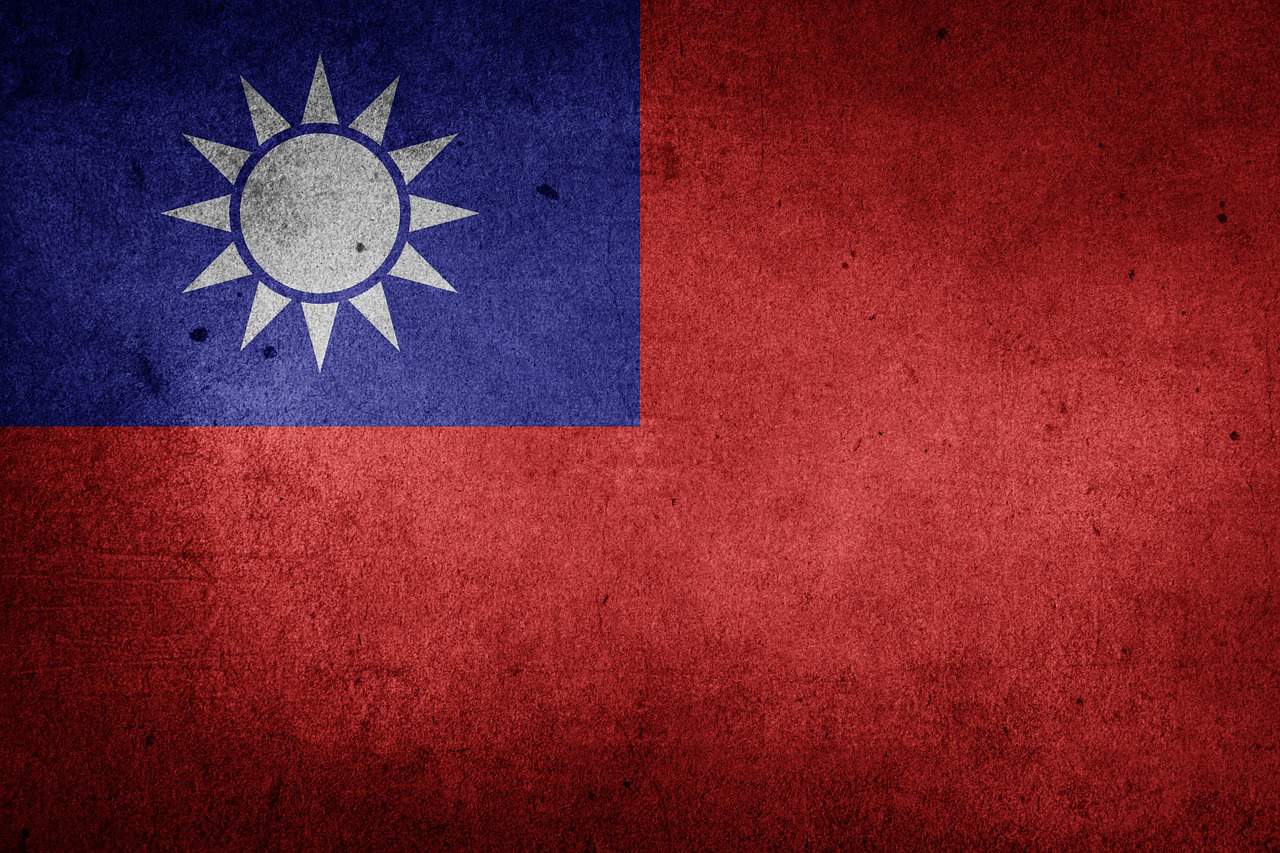Posted for fair use........
The shadow of Chinese military aggression looms large over Taiwan. While the island nation has invested in conventional military capabilities, the reality is that a conflict with China could be a classic David and Goliath scenario. To effectively deter an invasion and resist occupation, if...

smallwarsjournal.com
Thu, 05/02/2024 - 6:12am
Taiwan: Insurgents Needed
Dr. Lumpy Lumbaca
The shadow of Chinese military aggression looms large over Taiwan. While the island nation has invested in conventional military capabilities, the reality is that a conflict with China could be a classic David and Goliath scenario. To effectively deter an invasion and resist occupation, if necessary, Taiwan needs to move beyond its traditional military focus and embrace a multi-layered defense strategy that includes insurgency and resistance.
[1]
An Irregular Warfare approach may raise eyebrows and concern. Some in Taiwan, the US, and the world perhaps, might worry that such preparation will be seen as provocative by the People's Republic of China (PRC), further escalating tensions.
[2] However, this argument overlooks the deterrent effect a robust multi-layered defense can have. A well-prepared Taiwan, with the capability to inflict significant casualties on an invading force and make occupation a costly endeavor, is a far less attractive target.
There are competing schools of thought on the most effective way ahead for Taiwan.
[3] Some within the US defense establishment and parts of Taiwan itself advocate for a "resilience" focus as the primary strategy.
[4] This approach focuses on bolstering civil defense, economic self-sufficiency, and international support in support of conventional military preparation to deter and – if necessary - weather a potential invasion. While resilience has merit and is a necessary first step, it underestimates the deterrent value of a robust resistance capability and the potential to inflict significant damage on an invading force by way of organized insurgency.
[5]
A multi-layered defense that embraces resistance would be a far more formidable shield. A well-trained and equipped paramilitary force,
[6] distinct from the regular military and reserves,
[7] but integrated into the overall defense strategy, can serve as a crucial first line of defense. These forces could be deployed alongside the regular military, performing tasks like delaying enemy advances, securing key infrastructure, and conducting counter-attacks.
But deterrence isn't just about frontal defense. A well-organized and trained civilian guerilla force can become a thorn in the side of any occupying power. Leveraging knowledge of the terrain and utilizing unconventional tactics like hit-and-run attacks, sabotage, and disruption of PLA supply lines, a civilian guerilla force can significantly raise the cost of occupation for the PLA, making a swift victory a distant dream.
While eliminating PLA occupation forces on the ground will be a top priority for Taiwan if deterrence fails, just as it is for Ukraine against their Russian invaders today, a multi-layered defense goes beyond the battlefield.
[8] A clandestine network,
[9] including an "underground" for covert communication and support, "auxiliary networks" that provide logistical support to the resistance, and a robust "shadow government" capable of maintaining a semblance of civilian order and leadership during occupation, is crucial for sustaining resistance efforts. Training and organizing these elements of the insurgent movement should ideally be done now, ahead of the invasion, to maximize training and education opportunities.
This strategy also leverages Taiwan's existing cooperation with US Special Operations Forces (SOF) like the Green Berets.
[10] Building upon these training programs, Taiwan could establish specialized units focused on space and cyber warfare. These units could disrupt Chinese communications, gather intelligence, and potentially target key infrastructure behind enemy lines, further complicating the PLA's operations. While the US Army’s SOF-Space-Cyber “triad”
[11] is still in the nascent stages of development for actual joint force implementation, its applications for Taiwan will hopefully go beyond kinetic action and find creative applications for Unconventional Warfare
[12] (UW) and Foreign Internal Defense
[13] (FID).
Of course, implementing such a strategy faces challenges. Public support for some aspects, particularly the more proactive elements like a civilian guerilla force, may be limited.
[14] Legal frameworks for paramilitary forces and civilian engagement may need to be established or revised.
[15] Resource allocation and training for all these different elements will require careful planning and investment.
Despite these challenges, the benefits outweigh the costs. A multi-layered defense system that embraces resistance strengthens deterrence by showcasing Taiwan's unwavering commitment to self-defense, discouraging the PRC from initiating an invasion in the first place. Public support can be cultivated through effective communication campaigns that emphasize the importance of citizen involvement in national defense.
More important than any specific strategy or tactic discussed to this point, however, is the necessity to understand the human dimension of insurgency. Successful resistance embraces the motivations, fears, and desires that will drive people to action. In the context of Taiwan, a multi-layered defense strategy cannot succeed without a deep dive into the cognitive aspects of the conflict. This will require understanding the Taiwan people’s will to fight. Are they prepared to endure the hardships of Irregular Warfare and a protracted occupation? What are their fears and anxieties about a potential Chinese takeover? A second human element requires an analysis of the psychology of the Chinese Communist Party (CCP). This is admittedly challenging and something that many around the world try to understand, but it must be considered carefully. What are the CCP’s true objectives regarding Taiwan? What happens to the Party’s calculus if insurgency follows occupation? What motivates them, and what might deter them from an invasion in the first place? Finally, the thinking of international community cannot be ignored. Of course, this is a complex matter, and nations and leaders will likely react differently and change positions as time elapses. How do we expect key partners and allies to react to a protracted insurgency? Will they offer military or economic support to Taiwan's resistance, or will they remain on the sidelines? By carefully considering these human factors, Taiwan, its allies, and the US can craft a comprehensive strategy that resonates with the people of Taiwan, discourages the CCP from aggression, and garners international backing in the face of a crisis.
Taiwan's current defense strategy is insufficient in the face of a growing threat. High-tech weapons sales and training focused primarily on the Taiwan military may prove insufficient in either deterrence or resistance. A multi-layered defense that includes insurgency offers a far more robust deterrent and increases the cost of a potential invasion for China. While politically sensitive, this approach is ultimately essential for safeguarding Taiwan's security and freedom. By taking these steps, Taiwan sends a clear message: an invasion may be swift, but occupation will be a bloody and protracted affair. This, in turn, strengthens deterrence and increases the likelihood of a peaceful resolution to the cross-strait tensions through diplomatic means. The future of Taiwan's security hinges on its ability to prepare for the worst, and a multi-layered defense strategy that includes insurgency offers the best chance to deter conflict and ensure a bright future for the island nation.
The views expressed here are those of the author alone and do not reflect the official policy or position of the United States Government or Department of Defense.
[1] ROC Annual Defense Report. 2023.
https://www.ustaiwandefense.com/tdn...23/09/Taiwan-National-Defense-Report-2023.pdf
[2] Walsh, John. 2023. “Arming Taiwan an unacceptable provocation.”
Arming Taiwan an unacceptable provocation - Asia Times; Cai, Vanessa. 2024 “Mainland China says it will watch Taiwanese military exercises closely for signs of ‘provocation.’”
Mainland China to watch Taiwan military exercises for signs of ‘provocation’
[3] Swaine, Michael, and Shidore, Sarang. 2022. “A Restraint Recipe for America’s Asian Alliances and Security Partnerships.”
A Restraint Recipe for America's Asian Alliances and Security Partnerships
[4] Dominguez, Gabriel. 2024. “Taiwan civil defense groups push for more resilience as China threat grows.”
Taiwan civil defense groups push for more resilience as China threat grows
[5] Greer, Chris and Bassler, Chris. 2022. “Resist To Deter: Why Taiwan Needs To Focus On Irregular Warfare.”
Resist to Deter: Why Taiwan Needs to Focus on Irregular Warfare - Modern War Institute
[6] Minnick, Wendell. 2019. “Taiwanese Civilians Have an Answer to Chinese Threats: Paramilitary Groups.”
Taiwanese Civilians Have an Answer to Chinese Threats: Paramilitary Groups
[7] Wu, Huizhong. 2022. “Military reserves, civil defense worry Taiwan as China looms.”
Military reserves, civil defense worry Taiwan as China looms
[8] Braw, Elisabeth. 2024. “Taiwan and the art of societal resilience.”
Taiwan and the art of societal resilience | George W. Bush Presidential Center
[9] Lumbaca, Lumpy. 2023. “Every Taiwan Citizen A Resistance Member: Preparing For A Chinese Occupation.”
Every Taiwan Citizen a Resistance Member: Preparing for a Chinese Occupation - Modern War Institute
[10] Honrada, Gabriel. 2024. “US Green Berets deploying to Taiwan’s front-line.”
US Green Berets deploying to Taiwan's front-line - Asia Times
[11] White, Dottie. 2024. “Top Army’s generals for cyber, space and special operations convene for Triad partnership.”
Top Army’s generals for cyber, space and special operations convene for Triad partnership
[12] US Army Special Operations Command. 2016. “Unconventional Warfare Pocket Guide.”
https://www.soc.mil/ARIS/books/pdf/Unconventional Warfare Pocket Guide_v1 0_Final_6 April 2016.pdf
[13] Joint Chiefs of Staff. 2018, 2021. “Joint Publication 3-22: Foreign Internal Defense.”
https://www.jcs.mil/Portals/36/Documents/Doctrine/pubs/jp3_22.pdf
[14] Fried, Caroline. 2024. “Political compromise key for Lai to build Taiwan's resilience.”
https://asia.nikkei.com/Opinion/Political-compromise-key-for-Lai-to-build-Taiwan-s-resilience
[15] Shattuck, Thomas. 2023. “How Taipei Can Achieve Greater Civilian Buy-in for its Military Challenges.”
https://globaltaiwan.org/2023/01/ho...-civilian-buy-in-for-its-military-challenges/
About the Author(s)
J. “Lumpy” Lumbaca
Jeremiah “Lumpy” Lumbaca, PhD, is a retired US Army Green Beret officer and current Department of Defense professor of irregular warfare, counterterrorism, and special operations at the Daniel K. Inouye Asia-Pacific Center for Security Studies (DKI APCSS). He can be found on X/Twitter @LumpyAsia.



